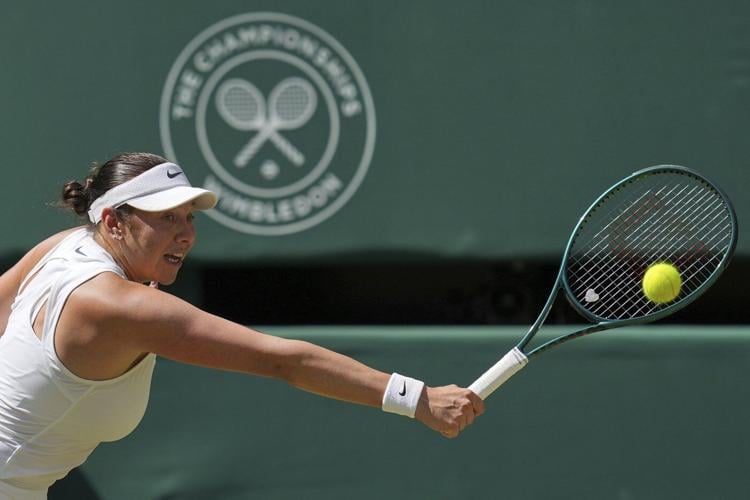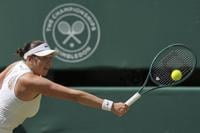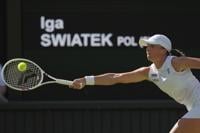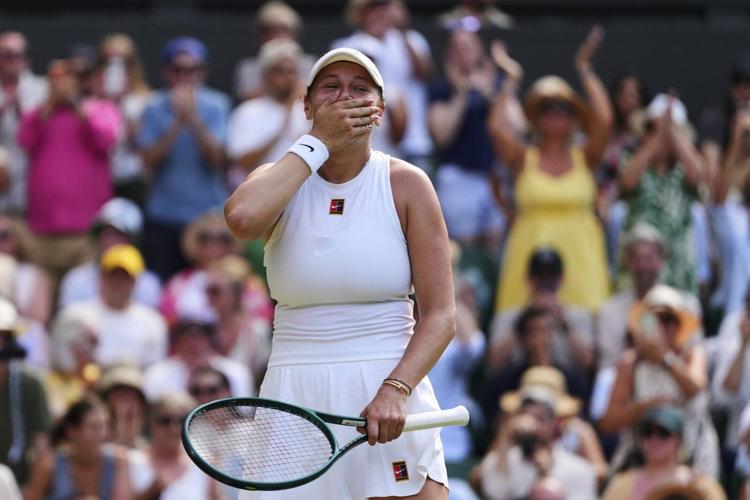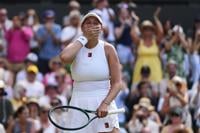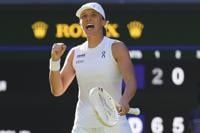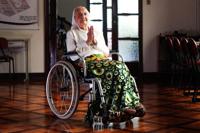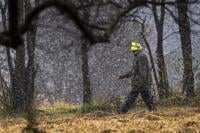LONDON (AP) — Either Amanda Anisimova or Iga Swiatek will leave the All England Club's grass courts as Wimbledon's eighth consecutive first-time women's champion.
Why has there been such a revolving door? Chris Evert has some thoughts about various elements that, as she put it ahead of Saturday's final, “make it difficult to feel completely secure and confident on this elusive surface.”
For one, there's the amount of talent in the game — “deeper now than ever,” said Evert, a Hall of Famer who won three of her 18 Grand Slam titles at Wimbledon in the 1970s and 1980s and was the runner-up six times during an era when Martina Navratilova won a record nine singles championships there.
Plus, Evert noted, there's a short turnaround after the red clay of the French Open, leaving only two to three weeks to practice and prepare for what she called a “polar opposite” surface. Another contributing factor are the .
And with no completely dominant figure since Serena Williams retired after the 2022 U.S. Open, there is more room for new faces such as the , a 23-year-old American who will be participating in her first major final against Swiatek, a former No. 1 who won four trophies at Roland-Garros and one at the U.S. Open but hadn't been past the quarterfinals at Wimbledon until now.
“I never even dreamt that it’s going to be possible for me to play in the final,” said Swiatek, a 24-year-old from Poland who hadn't been in a title match as a professional at any grass-court tournament until three weeks ago, when she was the runner-up at Bad Homburg, Germany. “I thought I experienced everything on the court, ” Swiatek said. “But I didn't experience playing well on grass.”
Sure did Thursday during her 6-2, 6-0 win against Belinda Bencic in the semifinals.
“Maybe I would have had to play my absolutely best tennis of my life and risk every shot to beat her today, the way she played,” Bencic said.
Like Swiatek, Anisimova also was a recent runner-up on the surface, reaching the final at Queen's Club last month.
Her powerful, flat strokes are a natural fit for the turf, and she showed just how good she can be on the stuff during a on Thursday.
“I have to say,” Sabalenka said, “that she was more brave.”
A sign of Anisimova's skill on grass came three years ago, when she reached the quarterfinals at Wimbledon.
But she hadn't played at the event again until now, because she sat out the tournament during a mental health break to deal with burnout in 2023, then was ranked too low to get in automatically a year ago and lost during the qualifying rounds.
“A lot of people told me that you would never make it to the top again if you take so much time away from the game. That was a little hard to digest, because I did want to come back and still achieve a lot and win a Grand Slam one day,” Anisimova said, adding that she is pleased to be “able to prove that you can get back to the top if you prioritize yourself.”
Since Williams won her seventh and last Wimbledon championship in 2016 — a repeat performance from a year prior — every woman to hold the trophy was doing so for the first time.
There was Garbiñe Muguruza in 2017, Angelique Kerber in 2018, Simona Halep in 2019 and Ash Barty in 2021 — all of whom are now retired — followed by Elena Rybakina in 2022, Marketa Vondrousova in 2023 and Barbora Krejcikova in 2024 (the tournament was canceled in 2020 because of COVID-19).
Contrast that sort of variety to the much smaller circle of men to win Wimbledon lately: Since 2003, just five have done it — Roger Federer with eight, Novak Djokovic with seven, and Rafael Nadal, Andy Murray and with a pair apiece.
___
Howard Fendrich has been the AP’s tennis writer since 2002. Find his stories here: . More AP tennis:
___
AP tennis:

